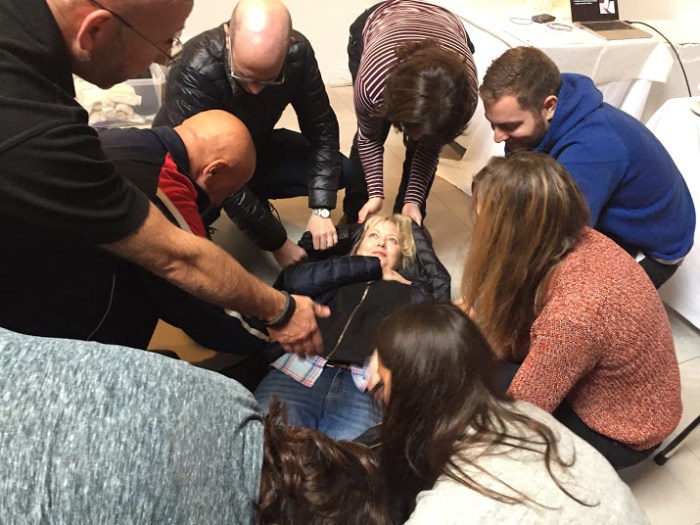
So I’m back from a six-day trip to London and its outer regions, where I was sent for a hostile environment training course, which is something tailored for journalists who cover riots, natural disasters and war zones as well as non-profit employees who work in the same kind of areas. All my company’s foreign correspondents go through this, and usually every three years, to make sure our skills are fresh. It’s run by former British military people (the Brits seem to have cornered the market on hostile situation prep courses). They can authentically say things like, “I trained Peshmerga in 1991 and the new guard is really watered down.”
The training goes for varying lengths, but I was taking a ‘refresher’ which lasted three 12-hour days.
These courses cover everything from first aid (they do not let you leave without being able to quickly tie a tourniquet), to how to spot land mines, prepare risk assessments, handle sketchy checkpoints (where people are often fleeced or kidnapped), protect yourself under small arms fire or more serious stuff, like rocket-propelled grenades, avoid injuries while covering riotous protests and, of course, how to try and negotiate yourself out of a kidnapping/hostage situation. All this while doing your job, so the exercises also have you try and conduct interviews and record footage while you’re avoiding risk.

SAMPLE LESSON: “ISIS isn’t big into ciggies, so maybe have chocolates on you instead.”
To prepare you, the training team have bands of actors and real life scenarios (even a fake country with rebel factions and such) who are often catastrophically bleeding or disemboweled or stuck underneath actual vehicles or other assorted horrific situations so that you can practice your training.
SAMPLE LESSON: “There’s a certain amount of holes in your body and your objective is to come back without any additional holes.”
On the final day we simulated a convoy going into a rebel-held area of a fake country and ran into all sorts of intense situations. My four-man team hit a low point when we went running into a field of land mines because well, we didn’t really check. Gah! Learning experience.
SAMPLE LESSON: “Judge the right time and tactic to be extorted.”
The class is full of war correspondents and other assorted badasses. So hands do go up when a trainer asks, “Who was in Benghazi? Anyone do Tripoli? Remember when kids fired RPGs into the sky?”
Between the hands-on exercises are lectures from the military guys. One of them was Scottish and another, Irish. I could understand about 60% of what the Scot was saying, and about 75% of the Irish guy. Even the Liverpool accent was tough for me though, let’s be honest. This is some vocab I had to pickup along the way:
Boot: Car trunk
Bonnet: Hood
432 (I think?): Scottish emergency number

In addition, now I know how shrapnel flies up in an arc (hence the reason to get down really low if you can’t find cover), our first aid kids come with EXTRA packing gauze for those wounds where there’s an open cavity you need to pack and a special “Stump Dressing” for missing limbs.
I recommend this course, not only for the practical lessons but also because mine was in the most beautiful setting for a course like this. Apparently we did exercises where the Canadians trained for D-Day. And the band of classmates is going to be inevitably interesting, because, otherwise they wouldn’t be in this course. Afterwards you’ll know answers questions like “Can I elevate a stump?” and “How do I tourniquet myself?”
